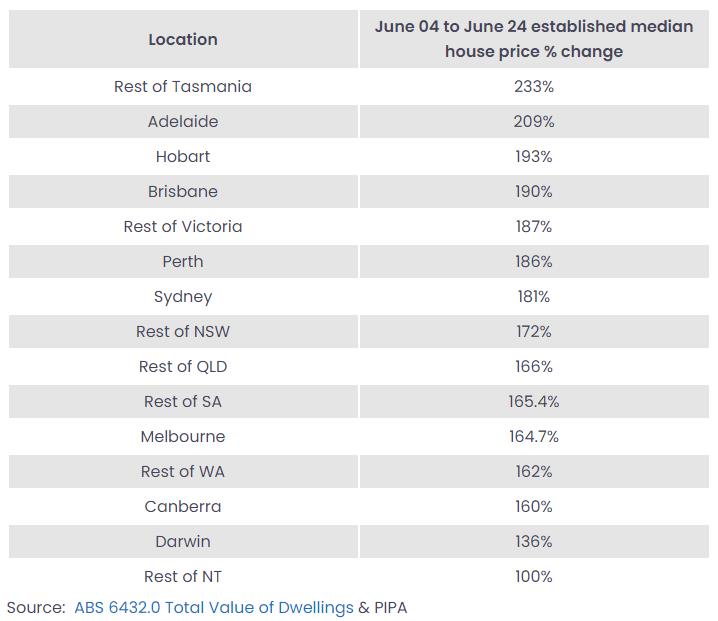Australia’s housing market has started losing momentum, with home price growth slowing to 1.0% in the September quarter.
According to CoreLogic’s latest Home Value Index, this is the lowest rise over a rolling three-month period since March 2023. Monthly growth was even smaller at 0.4%.
Outcomes do, however, differ from one location to the next. Of the eight capital cities, for example, four recorded growth (albeit lower than during the previous quarter) while four saw price declines.
The causes of falling prices
CoreLogic research director Tim Lawless says several factors have influenced the downturn in home prices, including a rise in fresh housing stock on the market, slower population growth and anticipation of an interest rate cut. But one factor “stands above the rest”.
“We’ve moved through a very strong housing market at a time when the economy itself has been quite weak, and…I think we’re finally starting to see affordability pressures biting.”
He adds: “It has defied logic that the market could have been this strong at a time when interest rates are very high and household debt levels are quite stretched.”
Long-term property growth
While annual growth has also slowed slightly, home prices still rose 6.7% in the year to September. Furthermore, new research from the Property Investment Professionals of Australia (PIPA) reveals that property – in the right location – is a safe and stable performer over the long term.
Analysis of Australian Bureau of Statistics’ established median dwelling values from June 2004 to June 2024 found that the top-performing location recorded house price growth of 233%. The bottom-performer saw growth of 100%.
PIPA board director Peter Koulizos, who completed the research, says smaller capital cities or more affordable regions produced the “very best results”.
For example, Tasmania, excluding Hobart, saw its established median house price soar from $169,000 to almost $449,000 while the best capital city performers were Adelaide, Hobart and Brisbane.
“Consider that Hobart has experienced a softening of prices over the past few years, but its established median house price has risen by 193% since June 2004.
“Likewise, with Adelaide and Brisbane, whose markets are very strong at present, but where both had long periods of flat-lining price points throughout the years.”
Koulizos says these types of results show that property markets are not linear.
“Rather, price growth occurs at varying points through the years.”

Benefits of buying now
Some property buyers are choosing to wait for interest rates to fall before purchasing, but buying when rates are still high can offer some advantages. These include:
- Less competition
When interest rates are higher, many potential buyers are discouraged from entering the market due to increased borrowing costs. This can lead to less competition, potentially allowing you to secure properties at more favourable prices or terms.
- Potential for capital growth
Lower interest rates typically stimulate the property market, which can drive property prices higher. By purchasing when interest rates are high, you could benefit from potential capital growth.
- Better negotiation power
Sellers may be more willing to negotiate on price or offer favourable terms when the market is quieter due to higher rates.
- Strong rental yields
As higher interest rates can dampen property price growth, you may be able to find properties where rental yields are greater relative to purchase price.

